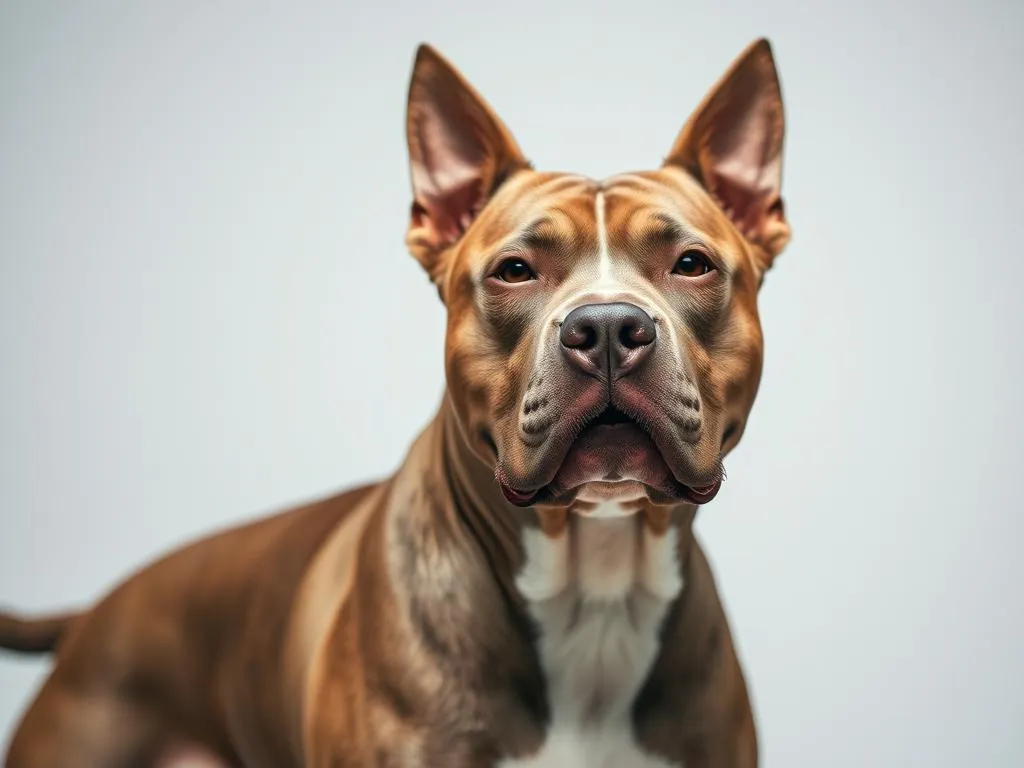
Introduction
Understanding dog breeds is essential for any dog owner, especially when it comes to caring for specific breeds like the Pitbull. These dogs, often misunderstood, are known for their loyalty, strength, and playful nature. One crucial aspect of Pitbull ownership that often comes up is their growth pattern. Knowing when does a pitbull stop growing can significantly influence how we approach their training, nutrition, and overall care. This article will delve into the various growth stages of Pitbulls, the factors that affect their growth, and what you can expect as your Pitbull matures.
Understanding Dog Breeds
Definition of Dog Breeds
A dog breed is a specific strain of domestic dogs with distinct characteristics, such as appearance, behavior, and temperament. These traits often arise from selective breeding to fulfill particular roles, such as herding, hunting, or companionship. Each breed has unique qualities that define its behavior, health tendencies, and care requirements, making breed knowledge critical for effective ownership.
Importance of Breed Knowledge
Understanding breed-specific traits is vital for dog owners. It influences training methods, dietary needs, exercise requirements, and health management. For instance, Pitbulls are energetic and intelligent, necessitating consistent training and socialization. Additionally, knowledge of potential health issues associated with the breed can help owners take proactive measures to maintain their dogs’ well-being.
Overview of the Pitbull Breed
History and Origin
The term “Pitbull” refers to a group of breeds, including the American Pit Bull Terrier, American Staffordshire Terrier, and Staffordshire Bull Terrier. Historically, these breeds were developed in the United Kingdom for bull-baiting and later, as farm dogs. Over time, they evolved into loyal companions known for their protective nature and strong bonds with families.
Physical Characteristics
Pitbulls are medium-sized dogs, typically weighing between 30 to 85 pounds, depending on their specific type. They possess muscular builds, a broad head, and a short coat that comes in various colors. The American Pit Bull Terrier is often larger and more muscular than its cousins, such as the Staffordshire Bull Terrier, which tends to be smaller and stockier.
Temperament and Behavior
Pitbulls are known for their affectionate and loyal temperament. They are intelligent dogs that thrive on human interaction, making them excellent family pets. However, proper socialization and training from an early age are crucial to ensure they develop well-rounded behaviors. Without proper guidance, they can exhibit undesirable traits, such as aggression or anxiety.
Growth Stages of Pitbulls
Puppy Stage (0-6 months)
During the first six months, Pitbull puppies experience rapid growth. They can gain several pounds each week. On average, a Pitbull puppy weighs around 10-15 pounds at two months and can reach 30-40 pounds by six months. Nutritional needs are critical during this stage; a high-quality puppy food rich in protein and essential nutrients is recommended. Socialization is also vital; exposing puppies to different environments, people, and other animals will help them grow into well-adjusted adults.
Adolescent Stage (6 months – 1 year)
The adolescent stage is marked by continued growth and development. By six months, most Pitbulls will weigh between 40 to 60 pounds, with males typically larger than females. This period can be challenging due to behavioral changes often associated with adolescence, such as increased energy levels and stubbornness. Consistent training and establishing boundaries are essential during this time to guide their behavior positively.
Adult Stage (1 year and beyond)
Pitbulls generally reach their full height by around 12 months but may continue to fill out and gain muscle mass until they are about 2 to 3 years old. Adult males usually weigh between 60-85 pounds, while females weigh around 30-60 pounds. Behaviorally, adults tend to become calmer and more settled, though they still require regular exercise and mental stimulation. Owners should also be aware of health considerations, as certain conditions can arise in adulthood, such as hip dysplasia and skin allergies.
When Does a Pitbull Stop Growing?
Growth Timeline
The growth timeline for Pitbulls can vary based on several factors, but generally, they reach their adult size by 12 to 18 months. Compared to other breeds, which may take longer to mature, Pitbulls tend to grow relatively quickly. Understanding this timeline helps owners set realistic expectations for their dog’s development.
Factors Influencing Growth
Several factors play a role in determining when a Pitbull stops growing:
-
Genetics and Lineage: The genetic background of a Pitbull can significantly influence its growth rate and final size. Dogs from larger bloodlines may grow more than those from smaller ones.
-
Nutrition and Diet: Proper nutrition is crucial for healthy growth. A balanced diet rich in proteins, fats, and essential vitamins ensures that a Pitbull develops correctly.
-
Environment and Exercise: A stimulating environment and regular exercise can promote healthy growth. Pitbulls need physical and mental engagement to thrive.
Signs That Your Pitbull Has Stopped Growing
There are several indicators that your Pitbull has reached its full growth potential:
-
Physical Characteristics: A fully grown Pitbull has a well-defined muscular build, and its size will remain consistent. You may notice a broader chest and thicker neck.
-
Behavioral Indicators: As Pitbulls mature, their energy levels typically stabilize. If your dog seems less hyperactive and more settled, it may indicate maturity.
Health Considerations Related to Growth
Common Growth-Related Health Issues
Pitbulls can be prone to specific growth-related health issues, such as hip dysplasia and obesity. Regular vet check-ups are essential for monitoring growth and identifying any potential health problems early on. Being aware of these issues allows owners to take preventive measures.
Maintaining a Healthy Growth Rate
Ensuring a healthy growth rate involves several key factors:
-
Proper Diet: Providing a high-quality diet tailored to a Pitbull’s age and activity level is crucial. Avoid overfeeding, as obesity can lead to various health issues.
-
Regular Exercise: Consistent, appropriate exercise helps maintain a healthy weight and supports overall growth. Aim for daily walks, playtime, and mental stimulation through training.
-
Weight Management: Monitoring your Pitbull’s weight is essential to ensure they are growing at a healthy rate. Adjust the diet and exercise routine as needed to maintain an ideal weight.
Conclusion
Understanding the growth patterns of Pitbulls is crucial for any owner. From the rapid development in the puppy stage to the stabilization of behavior in adulthood, recognizing these changes allows for better care and training. Knowing when does a pitbull stop growing helps owners prepare for their dog’s needs throughout its life. Emphasizing responsible ownership and understanding growth stages will lead to a happier, healthier Pitbull.
FAQs
Common Questions About Pitbull Growth
When do Pitbulls stop growing?
Pitbulls generally stop growing in height by about 12 months but may continue to fill out until around 2 to 3 years.
What should I feed my growing Pitbull?
A high-quality puppy food with adequate protein and nutrients is essential for their growth during the puppy stage. Consult your vet for specific dietary recommendations.
How can I tell if my Pitbull is growing too fast?
Monitoring weight and body condition is key. If your Pitbull seems to be gaining weight rapidly or is overweight, consult your veterinarian.
Tips for New Pitbull Owners
-
Start Training Early: Begin training as soon as you bring your puppy home. Consistency is key to developing good behavior.
-
Socialize Regularly: Expose your Pitbull to various people, pets, and environments to help them become well-adjusted adults.
-
Routine Vet Visits: Schedule regular check-ups to monitor growth and catch any potential health issues early.
By being informed about their growth stages and needs, you can ensure a long and fulfilling life for your Pitbull.









